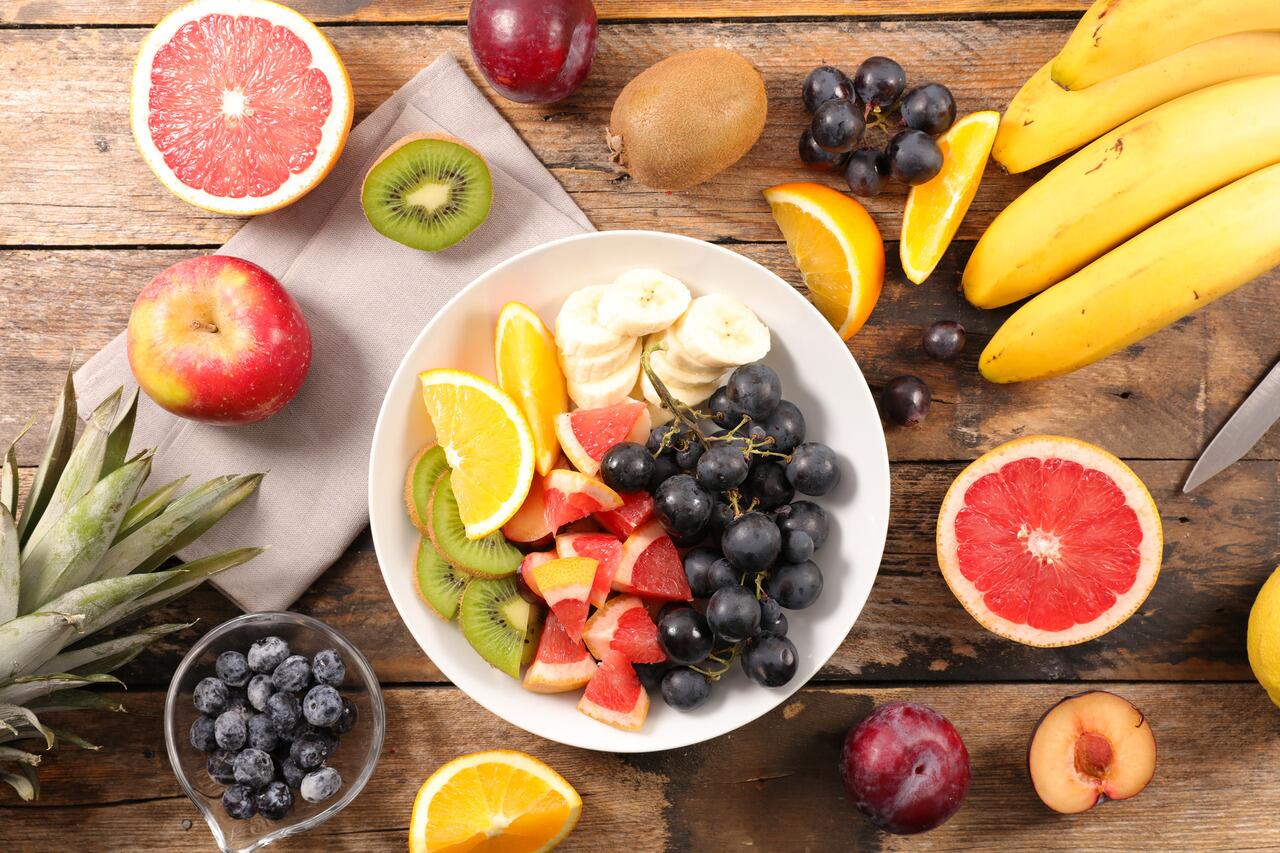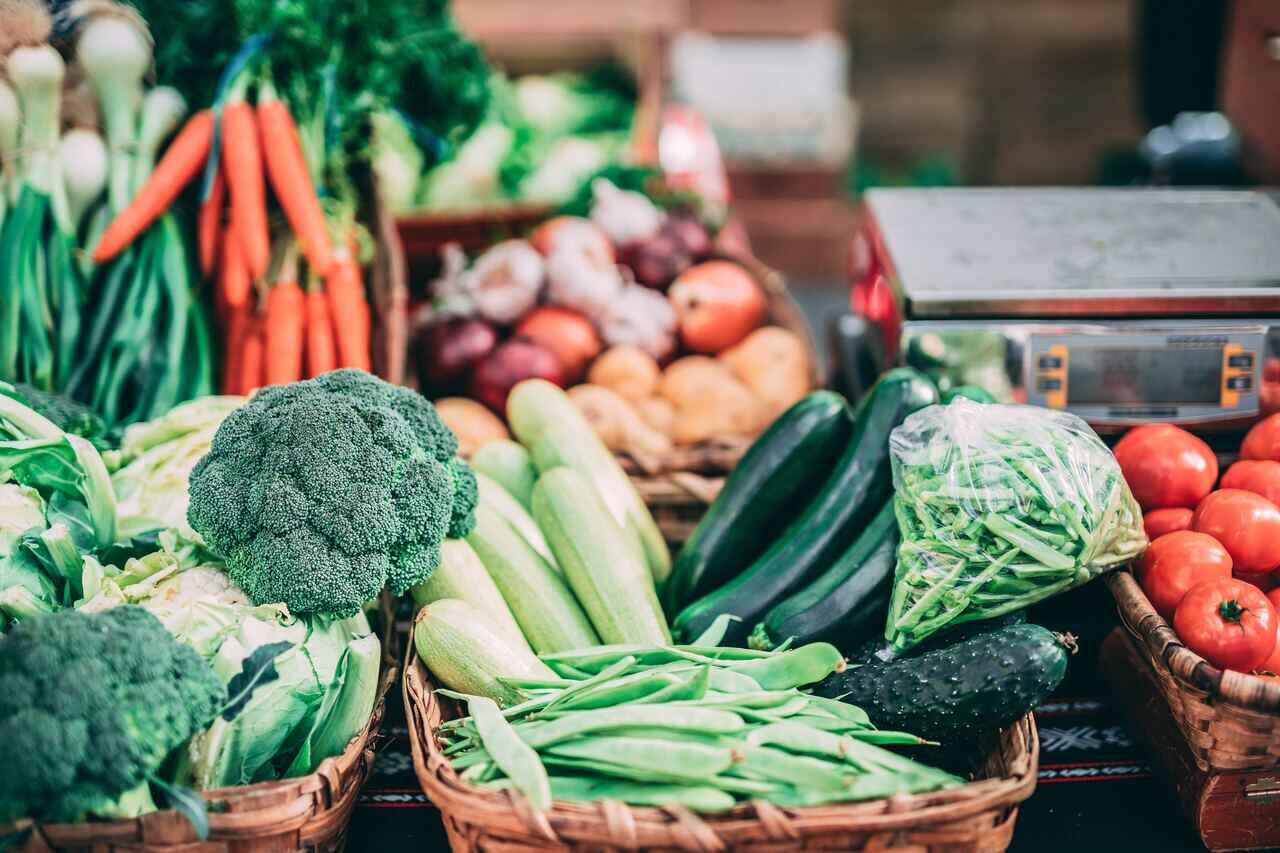
Fruits and Vegetables in Spanish – Vocabulary Guide
DATE:
Fruits and vegetables, the vibrant champions of our daily diet, overflow with the crucial nutrients that fuel our health and well-being. These delightful bites grace plates across the globe, and more often than not, their tantalizing tastes make them an irresistible feast. In the rich tapestry of Spanish-speaking countries, these plant-based treasures are a fundamental piece of everyday life and language.
Whether you’re just starting your Spanish journey or seeking to enrich your existing knowledge, mastering the names of different fruits and vegetables in Spanish is an essential step. And don’t worry – here at SpanishVIP, we’ve cultivated a diverse list of these culinary staples, from “la batata” (sweet potato) to ”el champiñón” (mushroom), “la patata” (potato), “lechuga” (lettuce), and “el plátano” (banana). We’ve spotlighted the essentials and thrown in some intriguing surprises, too. And, to add a splash of color, we’ll also be journeying to the verdant groves and gardens where these healthy snacks originate.
So, buckle up for an adventurous and appetizing ride through the lush landscape of fruits (or “frutas” in Spanish) and vegetables – or as we say, “verduras” – in Spanish! Our dedicated teachers are raring to guide you, and our student success advisors are ready to ensure your Spanish lessons are as fruitful as possible. Are you excited to enhance your food vocabulary in Spanish? Then let’s dive in, taste buds first, into this tantalizing world of linguistic and gastronomic delights!
DID YOU KNOW…?
Although in various Spanish-speaking countries, it is common to find various fruits, it may be that in other parts of the world, several of them are unknown. This is thanks to the fact that the location of this region in the world is privileged and you can see diversity of food and natural species.
Understanding Genders of Fruits and Vegetables in Spanish
In the rich tapestry of the Spanish language, just as in other romance languages, nouns are bestowed a gender, masculine or feminine. This isn’t exclusive to people or animals – it extends to inanimate objects too, including our delicious friends, fruits, and vegetables. Here, we will delve into this characteristic of Spanish that can sometimes be challenging for non-native speakers, particularly about edible plant produce, and how mastering this aspect can spice up your conversations, whether you’re in a Spanish-speaking country or trying out a new recipe at home.
On the surface, the rule seems pretty straightforward – if a fruit ends with “-o”, it’s masculine; if it ends with “-a”, it’s feminine. For example, “la manzana” (the apple) is feminine, and “el mango” (the mango) is masculine. But, as with any language, some exceptions make things more interesting. Take “el limón” (the lemon) for instance, it doesn’t end with “-o”, yet it’s masculine. Similarly, “la fresa” (the strawberry), although ending with “-a”, it’s feminine.
QUICK NOTE…
Fruits don’t change gender, so you should mention them in the gender they’re in, but banana is one of the only fruits that can be called “la banana” or “el banano” depending on which country you’re in, so there is no major inconvenience if you call this fruit in both ways.
Recognizing the gender of fruits and vegetables in Spanish is more than an academic exercise. It’s crucial to ensure grammatical harmony when it comes to article and adjective usage. For instance, “una manzana madura” translates to “a ripe apple.” Here, both “manzana” (apple) and “madura” (ripe) are feminine, ensuring a gender agreement. We use the article “la” with feminine nouns like “la cebolla” (the onion), “la batata” (the sweet potato), “la papa” (the potato), “la calabaza” (the pumpkin), “la col” (the cabbage), “la lechuga” (the lettuce) and “la berenjena” (the eggplant). And, “el” with masculine nouns like “el champiñon” (the mushroom) and “el platano” (the banana).
It’s not just for grammar enthusiasts; knowing your “fruta” from your “fruto” can make a world of difference when you’re trying to enjoy some fresh fruits in a new locale or figuring out how to order food in Spanish at a local market. The colors in Spanish also correspond to the genders, so you can accurately describe “el platano amarillo” (the yellow banana) or “la berenjena morada” (the purple eggplant).
So, as we dive deep into the vibrant world of fruits and vegetables in Spanish, let’s savor not only the flavors they bring to our tables but also the colorful vocabulary words they add to our linguistic arsenal. After all, learning Spanish is as much about embracing the language’s quirks as it is about ordering “la calabaza” instead of “el calabaza“. Let’s relish this linguistic journey together, from “la cebolla” to “el champiñon“, celebrating the uniqueness and diversity of the Spanish language.

Everyday Fruits In Spanish
Delving into the world of Spanish fruits, we uncover a treasure trove of flavors that find their way into the everyday conversations of people across the globe. In particular, Latin American countries embrace these delectable treats with open arms. Join us as we explore the main fruits that are not only widely consumed but also effortlessly incorporated into the daily vocabulary.
|
Spanish |
English |
|---|---|
|
El banano |
Banana |
|
La naranja |
Orange |
|
El limón |
Lemon |
|
La fresa |
Strawberry |
|
La piña |
Pineapple |
|
El mango |
Mango |
|
La manzana |
Apple |
|
La uva |
Grape |
|
La pera |
Pear |
|
El coco |
Coconut |
|
La cereza |
Cherry |
|
La guayaba |
Guava |
|
El durazno |
Peach |
|
La sandía |
Watermelon |
|
El melón |
Melon |
|
La papaya |
Papaya |
|
La maracuyá |
Passion fruit |
|
La pitaya |
Pitaya |
|
La guanabana |
Soursop |
|
La mandarina |
Tangerine |
|
El arándano |
Blueberry |
|
La frambuesa |
Raspberry |
|
El kiwi |
Kiwi |
|
El albaricoque |
Apricot |
|
La granada |
Grenade |
|
La toronja |
Pink grapefruit |
Other types of fruits: Nuts
Nuts are other types of fruits with different physical qualities and different properties. These fruits can be translated into Spanish as “dried” and the reason for this is that they have less than 50% water in their composition. Next, we give you a list of nuts in the following table:
|
Spanish |
English |
|---|---|
|
La almendra |
Almond |
|
La avellana |
Hazelnut |
|
El cacahuete |
Peanut |
|
La castaña |
Chestnut |
|
El dátil |
Date |
|
La nuez |
Nut |
|
Las pasas |
Raisins |
|
El piñón |
Pinion |
Vegetables in Spanish
It’s time to explore the bountiful world of vegetables in Spanish. Just like a cornucopia of flavors, these veggie delights play a vital role in the morning diet of families across Spanish-speaking countries. So, get ready to sink your teeth into this linguistic feast as we present you with the main vegetable vocabulary that will leave you craving for more. Prepare to meet these magnificent vegetables:
|
Spanish |
English |
|---|---|
|
El ajo |
Garlic |
|
El brócol |
Brocoli |
|
La calabaza |
Pumpkin |
|
La cebolla |
Onion |
|
El coliflor |
Coliflower |
|
La lechuga |
Lettuce |
|
La papa |
Potato |
|
El repollo |
Cabbage |
|
El tomate |
Tomato |
|
La zanahoria |
Carriot |
|
La espicana |
Spinach |
|
El guisante |
Pea |
|
El apio |
Celery |
|
La batata / El ñame |
Sweet potato |
|
La berenjena |
Eggplant |
|
El champiñón |
Mushroom |
|
El guisante |
Pea |
|
El maíz |
Corn |
|
El pepino |
Cucumber |
|
El pimentón |
Bell peppers |
|
El rábano |
Radish |
|
La yuca |
Yucca |
|
La habichuela |
Bean |
|
La remolacha |
Beetroot |
|
El espárrago |
Asparagus |
|
La arveja |
Vetch |
|
La acelga |
Chard |
|
La papa criolla / la patata criolla |
Creole potato |
|
La alcachofa |
Artichoke |
|
El aguacate |
Avocado |
DID YOU KNOW…?
In Latin America and Spain, “papa” (potato) is written the same as “papá” (dad) except that this last word has an accent mark in the last a, which allows it to sound different, and with the help of the context it can be differentiated from the first word.

Nourishing the Mind & Body
Alright, compadres! Now you’ve become a veritable expert on the tantalizing “frutas y verduras” of the Spanish speaking world, it’s time to put your knowledge into action. Why not start with a free 1:1 class or enjoy free 7 days of group classes? Our Dedicated Teachers are raring to go, as excited as a kid in a candy store… or should I say, a “mercado” full of tropical fruits.
Imagine strolling through a bustling market, in any Spanish speaking country, confidently asking for “el repollo”, “el pepino”, “el aguacate”, and “el tomate”. Picture yourself as a worldly conversationalist, discussing the merits of different vegetables, and suggesting the healthiest of snacks using your new Spanish vocabulary. Trust me, it’s a blast!
Remember, if you hit any roadblocks along the way, our Student Success Advisors are here to lend a hand. We’re all about making your journey as smooth as a perfectly ripe “aguacate”. So go on, dive in! Before you know it, you’ll be chatting away in Spanish about everything from “manzanas” to “zanahorias”, making new friends and maybe even surprising yourself. After all, learning fruits in Spanish – or any language – is more than just vocabulary. It’s a ticket to a whole new world of experiences. Happy exploring!








